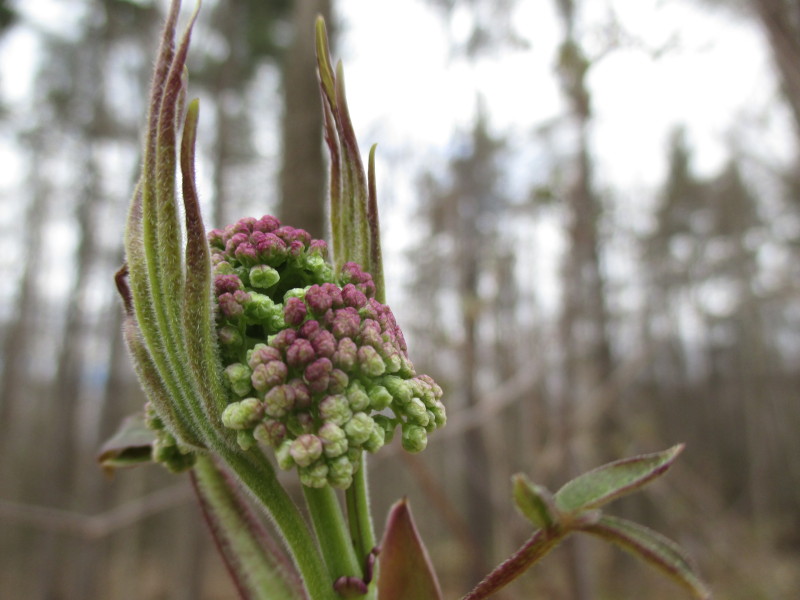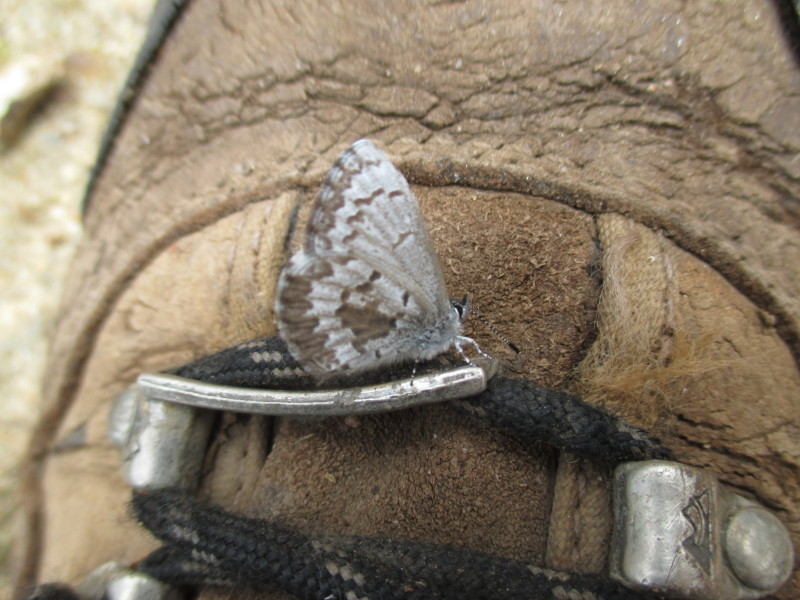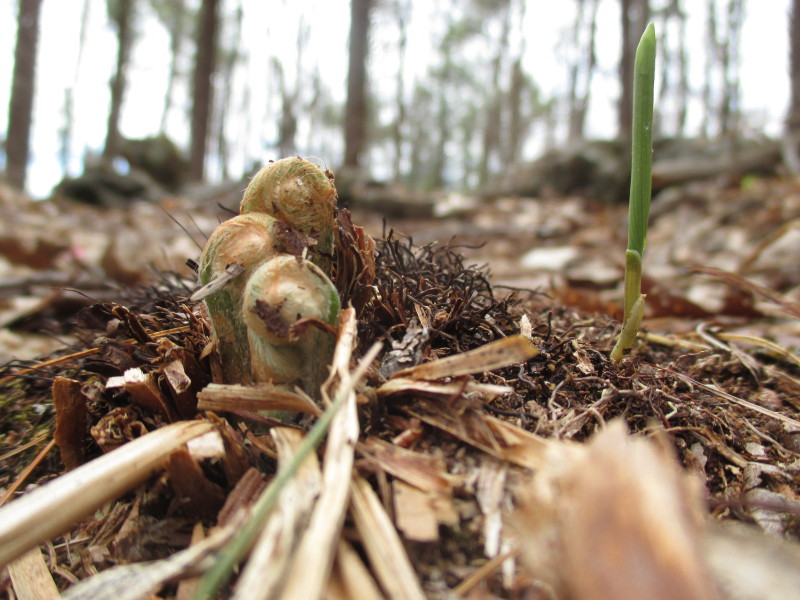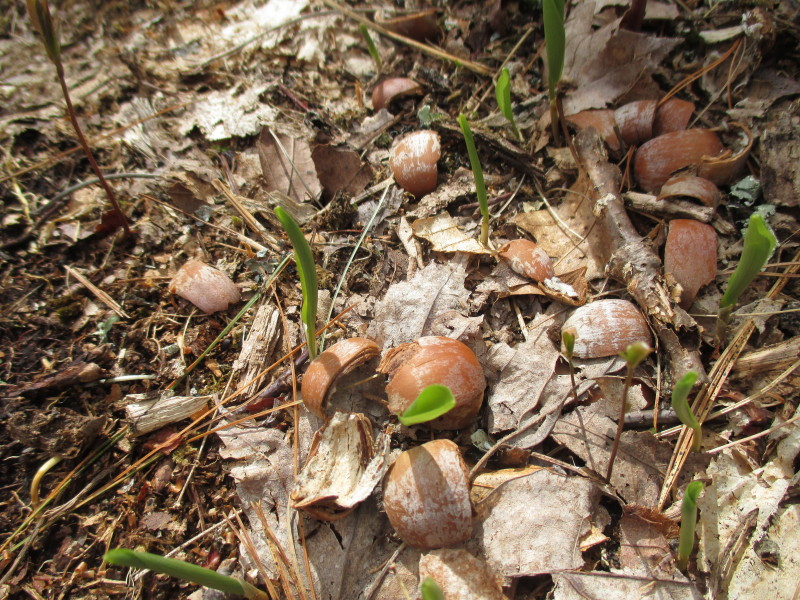PHENOLOGY: ON THE HUNT FOR SPRING AT THE HARVARD FOREST
The tree line is flushed with red maples in bloom; the black cherry is in leaf, and the first ferns and mayflower are making a brave start: spring has arrived at the Harvard Forest.
The frogs got it started, first the woodies with their weird quacking call, and now the peepers are positively deafening. Last night under a waxing moon I went out into the forest with friends after dinner to follow the peepers’ calls to a pond in the woods. We stood in awe as the season’s first moths cruised the warm night, the moon reflected off the water, and the peepers sang their little hearts out. No bigger than the first joint of a finger and perfectly camouflaged, even with our flashlights we could not see what we heard all around us. So we just enjoyed their night music, eventually returning to Community House here at the Harvard Forest where we all live. The moonlight spilled silver through the trees onto our woodland path.
It was a magical coda to one of my favorite things: a day spent in the woods. I was out all afternoon doing the tree survey that John O’Keefe, field phenologist at the Harvard Forest, usually completes in about three hours. John has been doing this survey for 25 years and reads the woods as rapidly as a newspaper. I understood with new appreciation the complexity of phenology: the practice of observing and recording the seasonal progression of nature, as I tried doing his job even for a day.

Making notes on the phenology of the Harvard Forest tree canopy. Documenting the seasonal progression of buds and leaves on the trees and woodland shrubs is an excellent way to discern the effects of climate change on forest ecosystems.
I have been at the Harvard Forest since September on a Bullard Fellowship in forest research, to work with researchers using tree canopy phenology to observe the effects of climate change on the timing of the seasons, and the forest’s ecology. Scientists in the Richardson Lab at Harvard University do this in a number of ways. John and researcher Steve Klosterman monitor the grand procession of the seasons week by week, watching for leaf emergence, color, and drop in spring and fall. John does his survey on foot, and Klosterman deploys a drone to photograph the canopy on weekly flights.

Red elderberry were the first plant to leaf out at the forest, and now their flower buds are starting to color.
Andrew Richardson, associate professor at Harvard University meanwhile keeps a constant electronic vigil on the canopy, with web cams he has installed on towers in the forest.
With John away this week it was my turn to do the ground survey, tracking the 75 trees he monitors in spring. It’s actually quite demanding. Are those buds slightly swollen, moderately swollen, or broken and in first leaf? What about the flowers on the maples and the shad bush – are they open? This all sounds easier than it is when the tree canopy is 60 feet up. But what a pleasure, to slow down enough to actually look at a whole tree, in detail, and watch spring unfold tiny change by change. A privilege, actually, in our rushed and digital world. So yesterday I spent most of the day craning my neck at tree branches, and pulling them in close to study their buds.

A spring azure butterfly visits my boot. Common in the New England woods from late April through September, they are anything but common in their lovely appearance.
Everywhere, there were signs of spring: the first emerging ferns raised their fuzzy, tightly coiled heads through last year’s leaf litter. Mayflower, one of the first spring ephemeral wildflowers, was pushing brave spears up through the duff. The skunk cabbage unfurled big, glossy leaves with a tight hooded maroon speckled flower at their base. The striped maple had cracked their buds and were pushing out tender new leaves.
The red elderberry flowers were just starting to color, and I was aware of a new busyness on the forest floor, as the ants and spiders got to work in earnest. I saw my first mosquito, but the black flies aren’t here…yet.
I was visited by a spring azure butterfly, which basked on my boot. This tiny delicate creature lives up to its poetic name, with a sky blue color and delicate wing span under one inch. Slender and lovely, it is a common butterfly in New England, but a wonder on the wing, a flutter of lavender blue after a long snowy winter of white and grey. Spring azures are commonly seen from late April through September – making my April 29 visitor right on time.
I was delighted to see the woods coming to life all around the big oak I am studying at the Harvard Forest. Entering its 100th spring, I am writing a book, Witness Tree, under contract with Bloomsbury Publishing, about this tree’s century of human and natural history, and what they reveal about our changing relationship with nature and its consequences. With the help of researchers at the Richardson Lab, including John O’Keefe, I am also studying the phenology of the forest canopy and how it reveals changes in the physiology of this tree and others because of climate change.

The first ferns and mayflower emerge at the foot of the big oak I am observing at the Harvard Forest for my book Witness Tree.
A branch I collected from the big red oak and stuck in a vase weeks ago at my house has finally burst into its first leaves. Try this: it’s a great way to look at the emergence of leaves up close, and appreciate the incredible changes as they unfurl. At first the leaves on the big oak are no longer than my fingernail, yet their oak shape is fully defined. I look forward to watching them grow up close. But as I surveyed the big oak’s branches in the field yesterday, it looked to me like it could still be weeks before it comes into leaf. You can watch spring unfurl at the forest for yourself in real time on Harvard Forest web cams, including one under the Witness Tree.
There is so much change underway, every day. Phenology is the practice of tracking of those changes, with a whole new relevance in the era of global climate change.

How lovely to see the first spring ephemeral wildflowers start to come up amid the cracked shells of the acorns that carried the animals through last winter.



Leave a Reply